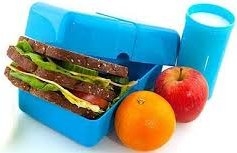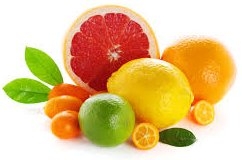When life is progressing at the speed of light (or so it seems sometimes in our modern age), who has the time to incorporate healthy living into daily routine? Few do, many don’t, but we try, especially when it comes to the health of our children. Though our intentions are noble, we often blunder due to a lack of awareness.

For instance, have you thought about the quality of your child’s
home-packed lunches? Would the contents of your child’s lunch satisfy the scrutinizing eyes of a dietitian? Does it meet the guidelines set forth by Canada's Food Guide (CFG)? You may answer ‘
yes’ to these questions, but the real answer may, in fact, be ‘
no’.
A study carried out by Western University in collaboration with the Children’s Health Research Institute of London, Ontario found that 60% of elementary
school children surveyed across ten schools in southwestern Ontario brought lunches with low nutritional value
[1].
What to add, what to eliminate: Some tips
You’ve heard these tips a thousand times, but here we re-introduce healthy eating in a way that even your kids might enjoy!
1. Life is more fun with a dip
Of the children assessed in the above study, the lunches of only one-third met the fruit / vegetable requirements outlined by CFG. Less than half the lunches had any vegetables. Even when parents packed vegis, 20% of vegetables remained uneaten. So how do we get kids to eat vegis? With a dip, of course!
Here’s a quick fix: pack freshly cut broccolis, cucumber sticks or mini carrots with a hummus dip. Remember to choose a dip that is made of
simple ingredients, like the Summer Fresh Light Hummus. Your kids will be so engrossed by the flavourful dip that they’ll forget they’re eating vegis.
2. Fool ‘em with substitutes

So your kids aren’t fans of fruits, eh? One substitute for apples is applesauce, particularly the highly recommended PC Organics Unsweetened Apple-Cinnamon Appletreet cups – no added sugars, portable and requires zero preparation.
You can also use a 100% fruit juice as a substitute for the real thing, but be sure to carefully read the label of anything that calls itself a fruit juice. Most of these juices consist mostly of water, calories and sugar. Remember, the best kind of juice is made in
your own kitchen and the best way to get all the goodies fruits offer is to eat the actual thing.
Here’s a quick and tasty fix: slice half a dozen strawberries and add a teaspoon of honey to sweeten the pot. Another popular combination is bananas and sesame seeds. Mash a banana with roasted, unsalted sesame seeds and pack this in a Tupperware – this dessert is healthy and will satisfy your children’s sweet tooth.
3. Good bye, processed snack!
Adding a packaged snack had become a common practice; 93% of lunches came with a snack in the study mentioned above. Read the ingredient list and nutritional value of these snacks and your jaws may just drop. Eliminate these immediately. However, in the world of processed snacks, some gems do exist, such as the Triscuit Original Crackers, which are only made of three ingredients.
4. More vitamin- and mineral-enriched foods
The study also found that students’ lunches didn’t contain enough fibre, potassium, vitamin D, vitamin A, calcium, zinc, and phosphorus. Unsurprisingly, there was an excess of sugar, sodium, fat and saturated fat. Here are some kid-friendly options to include in the lunchbox:

- Fibre – kidney beans
- Potassium – potatoes, bananas
- Vitamin A – carrots, dark leafy greens
- Vitamin C – oranges, lemons, grapefruit
- Vitamin D – milk, yogurt fortified with vitamin D, salmon
- Calcium – chocolate milk
- Zinc – beef, sesame seeds
- Phosphorus – tuna, pumpkin seeds
Breakfast may be the most important meal of the day, but bad lunches have sour consequences, so be proactive, be inventive and make healthy eating a practice for the entire family. After all, parents are children’s most influential role models!

 For instance, have you thought about the quality of your child’s home-packed lunches? Would the contents of your child’s lunch satisfy the scrutinizing eyes of a dietitian? Does it meet the guidelines set forth by Canada's Food Guide (CFG)? You may answer ‘yes’ to these questions, but the real answer may, in fact, be ‘no’.
For instance, have you thought about the quality of your child’s home-packed lunches? Would the contents of your child’s lunch satisfy the scrutinizing eyes of a dietitian? Does it meet the guidelines set forth by Canada's Food Guide (CFG)? You may answer ‘yes’ to these questions, but the real answer may, in fact, be ‘no’.
 So your kids aren’t fans of fruits, eh? One substitute for apples is applesauce, particularly the highly recommended PC Organics Unsweetened Apple-Cinnamon Appletreet cups – no added sugars, portable and requires zero preparation.
You can also use a 100% fruit juice as a substitute for the real thing, but be sure to carefully read the label of anything that calls itself a fruit juice. Most of these juices consist mostly of water, calories and sugar. Remember, the best kind of juice is made in your own kitchen and the best way to get all the goodies fruits offer is to eat the actual thing.
Here’s a quick and tasty fix: slice half a dozen strawberries and add a teaspoon of honey to sweeten the pot. Another popular combination is bananas and sesame seeds. Mash a banana with roasted, unsalted sesame seeds and pack this in a Tupperware – this dessert is healthy and will satisfy your children’s sweet tooth.
So your kids aren’t fans of fruits, eh? One substitute for apples is applesauce, particularly the highly recommended PC Organics Unsweetened Apple-Cinnamon Appletreet cups – no added sugars, portable and requires zero preparation.
You can also use a 100% fruit juice as a substitute for the real thing, but be sure to carefully read the label of anything that calls itself a fruit juice. Most of these juices consist mostly of water, calories and sugar. Remember, the best kind of juice is made in your own kitchen and the best way to get all the goodies fruits offer is to eat the actual thing.
Here’s a quick and tasty fix: slice half a dozen strawberries and add a teaspoon of honey to sweeten the pot. Another popular combination is bananas and sesame seeds. Mash a banana with roasted, unsalted sesame seeds and pack this in a Tupperware – this dessert is healthy and will satisfy your children’s sweet tooth.
